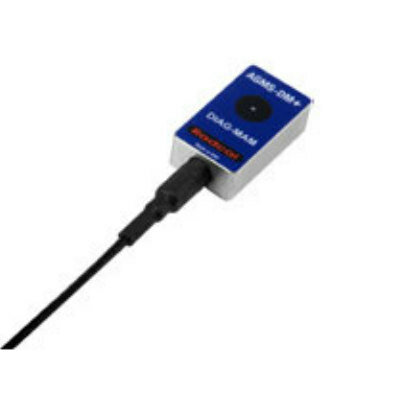MRI Proves Effective in Treatment of Back Pain
By MedImaging International staff writers
Posted on 27 Jan 2009
Magnetic resonance imaging (MRI) is a continually growing technology that is providing an increasing number of clinical advantages when used in the evaluation of back pain. It is predicted that over the next several years, additional technical developments will allow MRI to provide further benefits, according to a new study.Posted on 27 Jan 2009
Coauthor of the study, Victor M. Haughton, M.D., department of radiology, University of Wisconsin Hospitals and Clinics (Madison, USA), stated, "Because of the many different ways to gather this important information, MRI can be used to identify or display almost every type of spinal tissue or pathology. The imaging sequence can be modified to meet many different clinical needs.” Those include: back pain, infection, tumor, and trauma and vascular disease.
Researchers are continuing to find new ways to apply technologies that were previously used exclusively on other areas of the body. MRI scanning, which is considered safe, fast, and versatile, is now being utilized in several spinal applications such as intervertebral disk and facet joint degeneration, spinal canal stenosis, vascular disorders, and trauma.
MRI scans are generated by stimulating protons in tissues and liquids (such as fat, muscle, spinal cord, and fluid in the spine) using radio waves in the presence of a magnetic field. MRI detects the amount of energy emitted from these protons. This technology makes MRI well suited to evaluate the spaces between spinal vertebrae, bone marrow, the spinal canal, and in soft tissues. Thus, MRI has been shown to be useful for nearly every spinal pathology including; diseases of the spinal cord, nerve roots, vertebrae, disks, and blood vessels. Moreover, with MRI there is no radiation risk to the patient.
Computed tomography (CT) imaging has also improved in resolution and scanning speed and is frequently the only imaging method available for patients with pacemakers, nerve stimulators, or those who suffer from claustrophobia. For these individuals, CT can provide structural information needed for diagnosis in many back pain cases. However, CT does involve exposure to radiation.
MRI, although a very important technology, should never take the place of a thorough medical history and physical examination. Moreover, there is frequently structural evidence or abnormalities on MRI scans that are not clinically relevant and not necessarily related to a patient's symptoms. MRI findings must always, according to the investigators correlate with the patient's clinical outlook.
"The possibilities of magnetic resonance have not yet been realized. It is a rapidly evolving field. When we need tools to identify a possible herniated disk, the simplest type of MR imaging or CT imaging can be used successfully. However, if you want to find out which disk is causing pain, which nerve is firing, which metabolites are present in abnormal amounts, or how well the spinal elements are functioning, MR will provide the answers,” added Dr. Haughton.
The study was published in the January 2009 issue of the Journal of the American Academy of Orthopedic Surgeons.
Related Links:
University of Wisconsin Hospitals and Clinics














